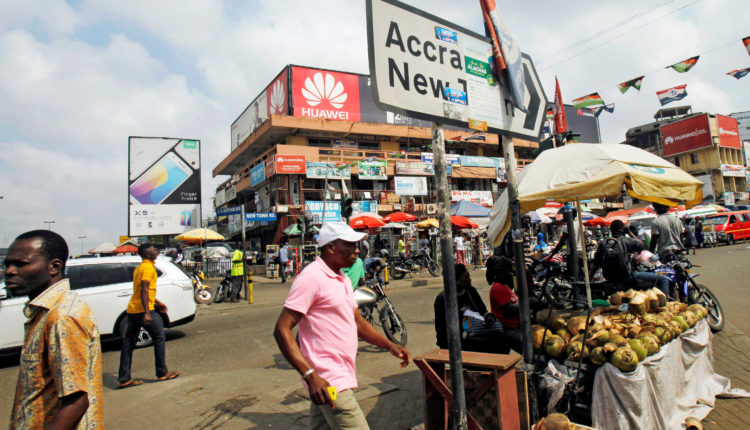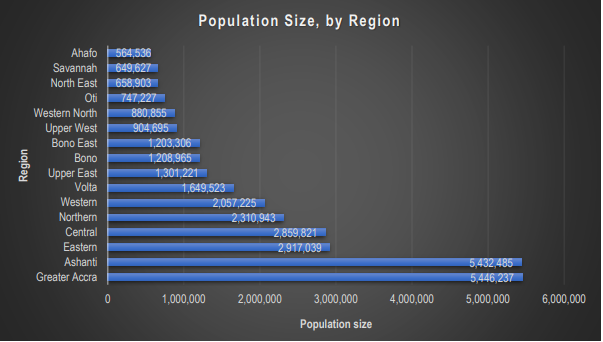
Greater Accra overtakes Ashanti Region as most populous region
The Greater Accra Region has now become the most populous region in the country for the first time since 1970, after recording 13,752 people more than the Ashanti region.
This was contained in the preliminary report of the results from the 2021 Population and Housing Census (PHC), which observed that the population in Greater Accra stood at 5,446,237, while that of the Ashanti region was 5,432,485.
Greater Accra’s population constituted 17.7% of the 30.8 million inhabitants recorded in the country, with the Ashanti region’s population being 17.6%. This means Greater Accra had 1% inhabitants more than the Ashanti region.
Per the data provided in the preliminary report of the census, it was only the Greater Accra and Ashanti were regions whose population crossed five million.
At a press briefing in Accra on Wednesday, September 22, the Government Statistician, Professor Samuel Kobina Annim, said, “these regions are both almost twice (1.9) times the size of the third most populous region, Eastern Region.
Meanwhile, the Central Region is now the fourth most populous region following the splitting of the former Western, Brong Ahafo and Northern Regions who were previously more e populous than the Central Region in 2010.
The four most populous regions make up over half (54%) of the total population, the Ghana Statistical Service (GSS) further stated.
The population of the Eastern region was 2,917,039, while that of the Central region was 2,859,821.
The Ahafo Region is the least populous region, taking the place of the Upper West, which had been the least populous in all the previous post-independence censuses.
The Savannah and North East Regions are the second and third least populous regions respectively, with a population of 649,627, and 658,903 in their respective regions.

According to the preliminary results of the census, the disparities in the population size across regions have been the largest observed since 1960 when Ghana conducted its first post-independence census.
In 1960, the most populous region, Eastern, was almost five times (4.63) the size of Upper West, the least populous. In 2010, the most populous region, Ashanti was almost seven times (6.81) the size of the least populous, Upper West.
However, in 2021, the two most populous regions, Greater Accra and Ashanti, are almost 10 times (9.6) the size of Ahafo, the least populous region.
It was observed that there were 11 other regions that are at least twice as populous as Ahafo and six that are thrice as populous.
For Savannah and North East, there are seven other regions twice as populous and five that are thrice as populous. The current Northern Region observed the largest change in population, with an almost 50% increase over its population in 2010.
The two other regions that made up the then Northern Region in 2010, North East and Savannah, had the second and third largest intercensal increases (41.7% and 38.4%) respectively.
The next highest change recorded was in Greater Accra, with an addition of 35.8%. The Eastern Region, followed by the Volta Region, recorded the lowest intercensal change (adding 10.8% and 11.4% respectively to their populations).
The range of these figures highlights the regional disparities in population change from the previous censuses.
READ ALSO: 2021 Population And Housing Census Extended Again

